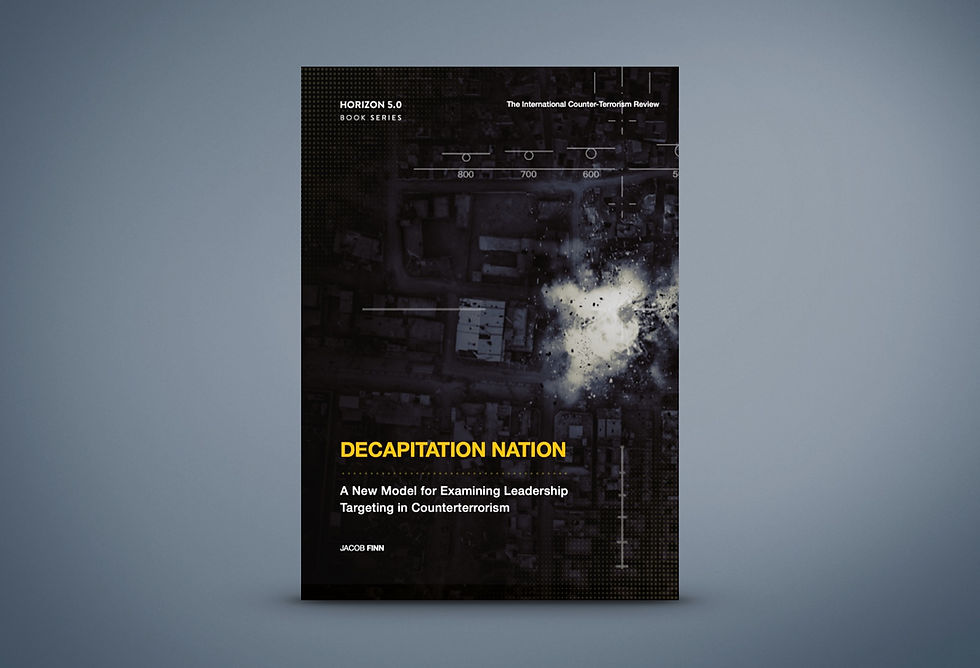Decapitation Nation
- Jacob Finn
- Jan 21, 2021
- 1 min read
Updated: Apr 21, 2023
A New Model for Examining Leadership Targeting in Counterterrorism
Jacob Finn

Abstract
When does leadership decapitation against terrorist groups cause their demise? This article reviews the existing body of literature concerning terrorist leadership targeting and identifies limitations in the prevailing approaches. As past attempts to gauge the efficacy of decapitation strategies are disputed, this article calls for a new methodology for conducting decapitation research. Deriving from two themes in the security literature—works on leadership targeting in conventional warfare and counterterrorism, as well as studies of “informal” terrorist actors—this article proposes that analysts and policymakers adopt a holistic framework for organizing knowledge around leadership decapitation. The author conceptualizes a model of leadership decapitation by dividing it into strategic, operational, and tactical levels of targeting with respect to both formal and informal terrorist actors. Empirical examples are drawn from U.S. and allied decapitation attempts against members of al-Qaeda and other actors in the broader movement for global jihad. Although the framework does not attest to the effectiveness of leadership targeting, it is a theoretical starting point implying new avenues for evaluating terrorism data. Consequently, this article elucidates research and policy implications for leadership decapitation in counterterrorism.
Table of Contents
Chapter 1: Terrorist Leadership Targeting: Literature Review and Research Gaps
Chapter 2: The Levels of Leadership Targeting Approach: Drawing from Lessons in Conventional Warfare and Counterterrorism
Chapter 3: The Spectrum of Actors Approach: Looking at Agents of Terrorism in the 21st Century
Chapter 4: A New Model for Leadership Targeting in Counterterrorism
Chapter 5: Leadership Targeting in Action: Case Studies from al-Qaeda and the Movement for Global Jihad

Comments